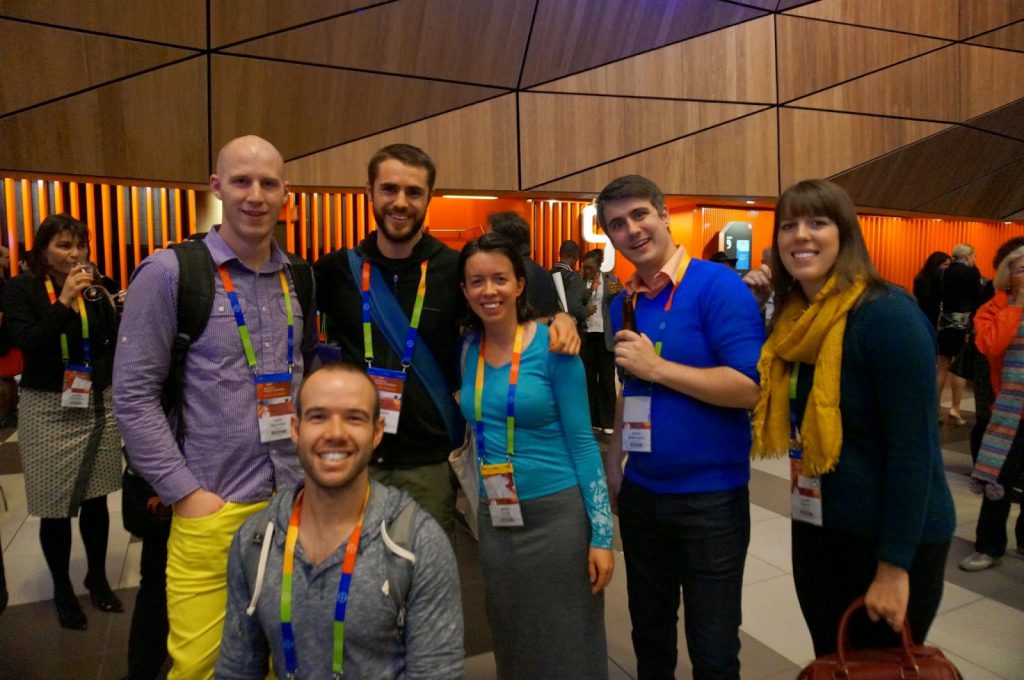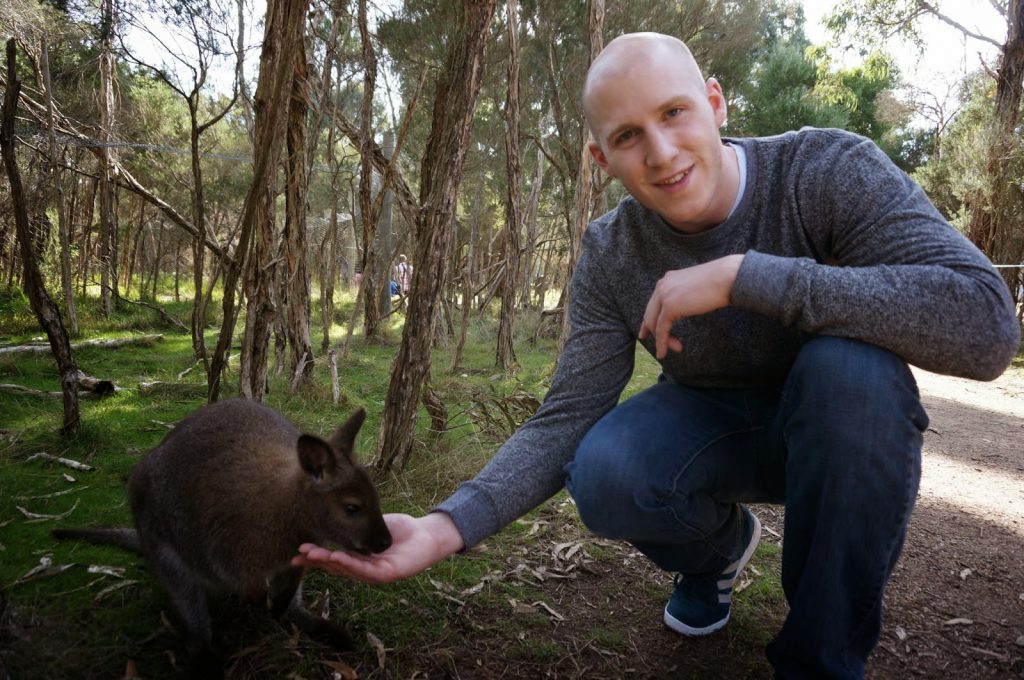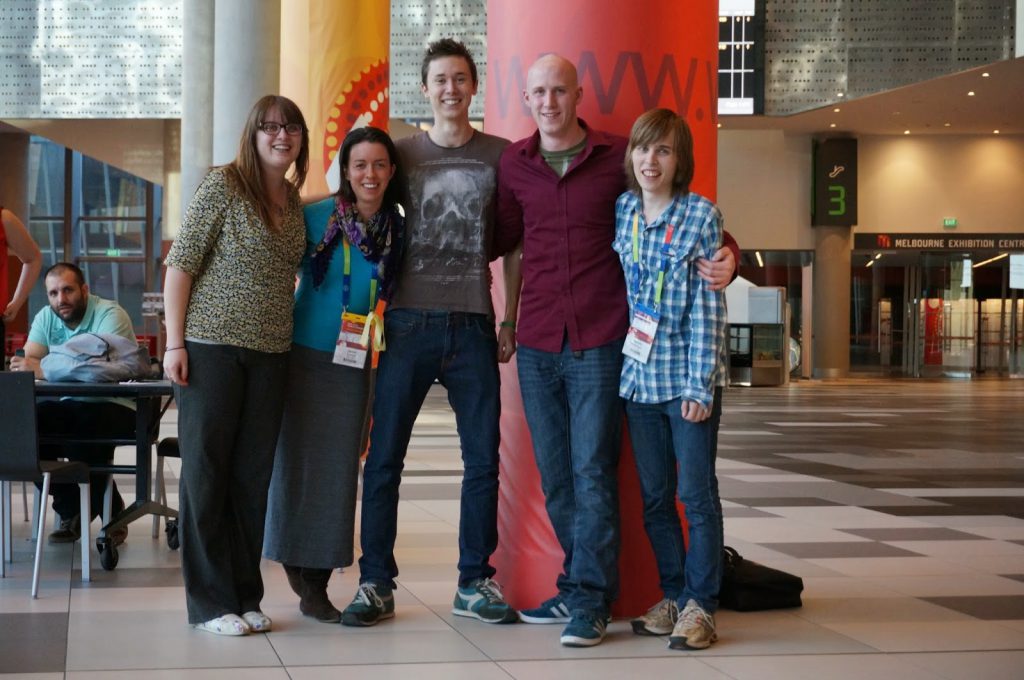John Schmitke: When a Role Model Meets His Role Models
My name is John Schmitke and this is my story. I’m currently the Vice President and Chairman of the Youth Committee at the
Canadian Hemophilia Society, Manitoba Chapter. As a young man living with hemophilia, I recently participated in a program which gave me the opportunity to be the Hemophilia Champion. The project allowed me to raise awareness about the disorder in Canada by taking part in media interviews on World Hemophilia Day and promoting an inspirational video that focused on my life and highlighted how I overcame my adversity.
The World Hemophilia Congress is an event that allows people affected by hemophilia to come together to discuss the disorder and treatment options. I was extremely excited to be visiting Australia!
 When people meet me they would never think that I have a
When people meet me they would never think that I have adisorder of any kind, never mind one that typically manifests in physical
symptoms. This is not the case for
everyone here.
This fact would become more apparent as the week progressed. I should say that I have always tried
to be acutely aware of what hemophilia is like for the majority of people
suffering from it, but that awareness is much different when those people
surround you.
not straighten, knee replacements, in wheel chairs, suffering from inhibitors
that prevent medication from being effective, and just living with daily
reminders of what it is we have.
lives. People that had no outward symptoms of having a bleeding disorder. I use the word luck, because luck it would seem in a big part of it. The other part is we have become very good at managing our bleeding disorders. Either consciously, or in some cases instinctively, finding a way to minimize the effects by staying ahead of them.
ankles fused. He is only in his twenties. He has the same type of hemophilia as I do and has had a completely and much more difficult set of challenges than I. Andrew went through a lot of his life accepting his limitations, but at some point he stopped accepting things for what they were
and decided to make them what he wanted. He lost a lot of weight, began fitness training, and lived his life the way he wanted to live it. If you were to ask Andrew he wouldn’t say it was an easy accomplishment, but he would say it was one worth all the effort several times over.
sounds conceited, but this level of physical ability is not something that is seen in people with severe hemophilia. I was surprised, and I admire Chris for what he had achieved, knowing the dedication that it took to achieve it. Let’s just say that I was used to being in the lead in the gym, period.
I have never had the experience of having a hemophiliac come near my physical ability, never mind surpass it. The experience was both humbling and immensely satisfying.
result of a bleed near his spine shortly after he was born that was caused by an epidural. He doesn’t want sympathy; no one with a mental fortitude as strong as his does. He as accomplished as anyone that I would meet, so he doesn’t need sympathy either. It is people that are this remarkable that inspire, though. They are the true role models among us. To go through life with a severe bleeding disorder as well as being unable to walk, but
accomplishing as much or more than most people with neither of these challenges shows that with effort and the willingness to adapt, these things are no handicap.
 The people representing the 120 countries attending this conference have knowledge to be gained. There are all kinds of sessions on treatment methods, medications, complications, challenges. But it’s witnessing the culmination of life experience within the attendees that make up the “patient population” that you gain the most.
The people representing the 120 countries attending this conference have knowledge to be gained. There are all kinds of sessions on treatment methods, medications, complications, challenges. But it’s witnessing the culmination of life experience within the attendees that make up the “patient population” that you gain the most.local, national, and global chapters, it would be to share that knowledge with the effect of changing lives for the better.
that has experience worth sharing. While I believe this, it is the experience of others that drives me to continue living in an exemplary way.
opportunities. Most importantly, thank you to the people that make these opportunities worth experiencing.



